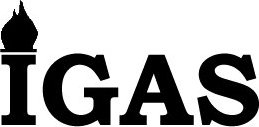
|

|
| Home | Our Company | Membership | Certification | Books | Contact Us |
 Cart Cart
|

|

|
| Home | Our Company | Membership | Certification | Books | Contact Us |
 Cart Cart
|
| IGAS traces its roots to 1910, when Milton N. Bunker, a shorthand teacher in Kansas, began his study in handwriting analysis. At this time, he was a penmanship and shorthand student. Three of his penmanship instructors told him to put less space between letters and to make shorter strokes at the ends of words. Bunker could not make these changes, and he wondered why. |
 "Milton N. Bunker, 1910 Founder, AIGA, I.G.A.S. After extensive research, Bunker saw the need for a compromise: a standardized or "scientific" approach to determining personality from a sample of handwriting. He studied the handwriting analysis theories of the time and formulated his own unique system based on extensive sampling and empirical research. This system, known as Graphoanalysis, uses stroke analysis to provide insight into personality traits and evaluation of a writer's personality. From about 1912 until 1928, Bunker empirically tested every rule and sign to verify that they worked consistently. Bunker claimed that if each one worked at least a thousand times, he considered it valid. |
 M.N. Bunker, 1953 In 1949, Bunker re-incorporated AIGA as the International Grapho-Analysis Society, Inc. |
 Narce Caliva, 1960 |
 V. Peter Ferrara 1968 In 1961, Ferrara re-incorporated IGAS in Delaware. He renewed the trademarks Graphoanalysis and Graphoanalyst and moved IGAS from Springfield, Missouri, to Chicago. In April 1961, M.N. Bunker died and Ferrara inherited a substantial portion of the company. |
 Dr. James C. Crumbaugh, 1974 |
 Bill Harms, 1975 In 1971, Bill Harms was certified as a Graphoanalyst and received his masters certification soon after. He began instructing for IGAS in 1982 and has served as an instructor for IGAS for over 40 years. |
 Emilie Stockholm, 1977 |
 Kathy Kusta, 2000 |
 John Steele, 1987 |
In November 2003,  assumed the role of President of IGAS, Inc. assumed the role of President of IGAS, Inc.
|
|